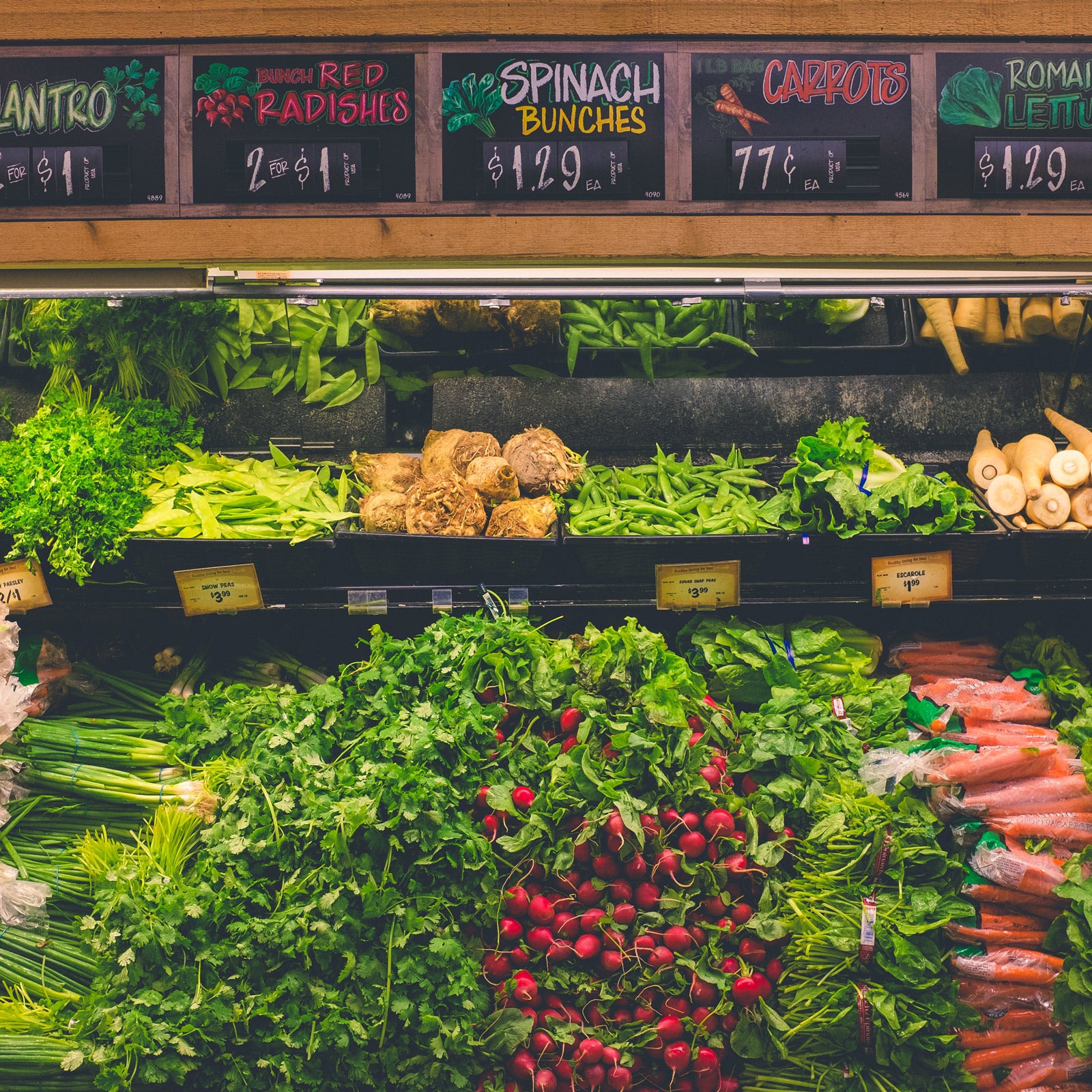If you’ve ever wavered between two equally sized, nearly identical boxes of strawberries at the grocery store and opted not to pay an extra $2 for an “organic” sticker, you’re not alone. In a perfect world, we’d all eat organic produce, local animal products, and sustainably harvested seafood while avoiding wasteful packaging and eating a balanced diet. But planet-friendly eating typically comes with a .
According to the World Wildlife Foundation, your eating habits are responsible for of your personal carbon footprint, and your decisions at the grocery store can profoundly lessen your impact on the planet on a local and global level. And there are plenty of ways to eat ethically without going into debt. Here are some tips for where to start.
Buy Local Meat Directly from the Farm
A growing number of small farms sell ethically raised meat in bulk, which guarantees you’ll always have local meat on hand at a lower cost than buying from your local farmer’s market. A half-cow can feed two people for nearly a year for roughly $1,100. While that price might seem extravagant, the cost breaks down to about $7 per pound (though costs vary from farm to farm). For comparison, ground beef, which has a lower cost per pound than any other cut of meat, goes for around $10 a pound when you don’t buy in bulk. When you pick up your half-cow, you’ll get a mix of different cuts and plenty of ground meat. A lot of farmers will remove the offal and stew bones, but you can keep them and make your own nutrient-dense stews and broths. For a little more variety, find a friend to go halfsies—if you buy a cow and a friend buys a pig, you can swap cuts of meat. If you’re not ready to commit to a half-cow, some farms offer quarter-cows at a slightly higher price per pound.
Even if you live in a city, there’s likely a small farm within a couple hours’ drive. , for example, is located two hours from New York City and sells direct-to-consumer cows, pigs, chicken, and eggs. When you choose a farm, be sure that their animals are antibiotic- and hormone-free, grass fed, and pasture raised. If you need extra storage space, are reasonably priced and create space to preserve other bulk buys, like seasonal produce.
Buy in Bulk
The price-per-ounce drops when you opt for bulk dried goods instead of canned beans, small quick-cook rice bags, and single-serve oatmeal. You’ll save enough money to choose fair-trade, organic products and still spend less than you would on nonorganic, smaller-packaged versions. For instance, a bag of dried organic costs the same per ounce ($0.19) as canned nonorganic black beans—and that ounce will expand to about four ounces when cooked. Making the switch also means you have less packaging waste to contend with. Bulk-buying often comes with a health bonus as well—canned beans can be high in sodium, and single-serve oatmeal regularly includes added sugar.
Shop Optimally
Aim to buy organic for the “”—the most pesticide-ridden produce, according to the Environmental Working Group, which includes strawberries, potatoes, and tomatoes—and go generic for the rest. Discount grocery stores like Aldi, Trader Joe’s, and Sprouts can be great places to buy from the corresponding “” list, which includes avocados, asparagus, and broccoli. The produce items listed there contain low levels of pesticides, meaning the nonorganic options are less damaging to your body and the planet. Additionally, try to buy produce that’s in season, as it’s more likely to be locally sourced rather than flown in. (Check out the USDA’s .)
Grow Your Own
If you have a backyard and live in a temperate climate, take advantage of the opportunity to plant your own vegetable and herb garden. Even in a tiny apartment, you can have a thriving herb garden going year-round and small on your balcony in summer months. Leafy greens like arugula and spinach can grow indoors, even through winter. offers starter packs of organic seeds to get your garden going, and new products like Glowpear’s planters make it almost impossible to kill your plants, thanks to self-watering technology. Bonus: has shown that indoor plants offer a psychological boost that makes you feel happier and more productive.
Join a CSA
Community supported agriculture (CSA) is an inexpensive way to make sure you’re eating your veggies. When you join a CSA, you get a regular delivery of local, seasonal vegetables right to your door for a set price. You’re almost like a shareholder: You gain ownership of a small part of that farm’s output. For a medium-size box, expect to spend around $20 to $40 per weekly delivery, but costs vary by farm. Not all CSAs are created equal, so do your research before picking one. They offer varying commitments to organic and ethical produce and livestock. For instance, in San Francisco is one of the only CSAs that offers 95 percent organic produce.
Embrace Some Canned Alternatives
Fresh, sustainably sourced seafood is rarely cheap unless you catch it yourself. Canned fish can be a great option. There are plenty of healthy, ethical offerings at reasonable prices. Sustainably harvested from Wild Planet, for example, costs roughly $11 per pound, less than half the price of wild-caught fresh salmon fillets. And you don’t have to sacrifice flavor: Canned salmon makes a great replacement for fresh in salmon burgers, as a salad topper, or tossed in a pasta.
DIY It
You can avoid single-serve packaging even when you’re reaching for quick, easy fuel. Allen Lim’s book offers recipes for making your own ride, run, or hike snacks. Reduce packaging by wrapping your bars in a or using reusable containers in place of a plastic bag. If you’re the endurance type, siphon real maple syrup into a instead of buying single-serve gels. An ounce of costs around $0.75, while a single-serve gel is around $1.30—and there are plenty of small-scale, family-run out there.


